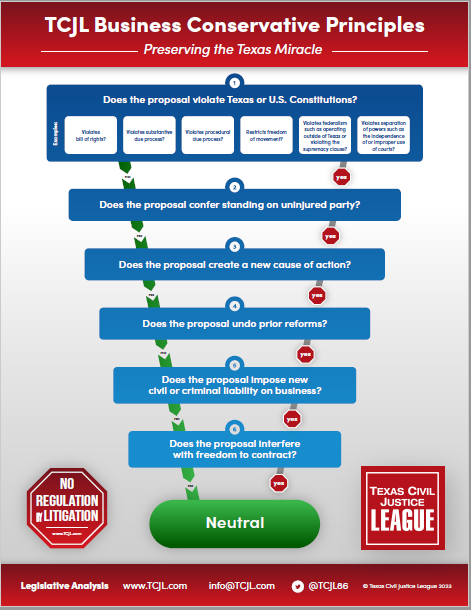 As we reported in June, energy companies that lease natural gas compressors won a significant victory for property owners when the Texas Supreme Court has ruled that § 25.25(c), Tax Code, motion to correct the appraisal roll is not precluded by a prior unsuccessful ARB protest.
As we reported in June, energy companies that lease natural gas compressors won a significant victory for property owners when the Texas Supreme Court has ruled that § 25.25(c), Tax Code, motion to correct the appraisal roll is not precluded by a prior unsuccessful ARB protest.
J-W Power Company v. Sterling County Appraisal District (No. 22-0974) consolidated with J-W Power Company v. Irion Appraisal District (No. 22-0975; June 7, 2024) arose from the taxpayer’s Chapter 41, Tax Code, protests of the appraisal districts’ treatment of its inventory of leased heavy equipment under §§ 23.1241 and 23.1242, Tax Code, which the Legislature enacted in 2011. The appraisal districts appraised natural gas compressors based on their situs in the county, rather, as the statute requires, in the county of their origin. Subsequent to the enactment of the statute, SCOTX decided EXLP Leasing, LLC v. Galveston Cent. Appraisal Dist., 554 S.W.3d 572 (Tex. 2018), which affirmed the constitutionality of the statutory situs rule and appraisal methodology. Prior to that, however, ARBs in Sterling and Irion Counties denied the taxpayer’s protests, and the taxpayer did not seek judicial review. Instead, after EXLP Leasingcame down, the taxpayer filed § 25.25(c), Tax Code, motions to correct the appraisal roll, which the ARBs likewise denied. The taxpayer appealed, but the district court granted summary judgment in favor of the appraisal districts. The Austin Court of Appeals affirmed, holding that res judicata precluded the taxpayer’s § 25.25(c) motions because the ARB had previously rejected virtually identical protests. The taxpayer sought review.
In an opinion by Justice Blacklock, SCOTX reversed and remanded to the court of appeals. Setting aside the question of whether the outcome of an ARB proceeding can even have res judicata effect, the Court rather resolved the case on the basis of the statute alone. Section 25.25(l), Tax Code, provides that a 25.25(c) motion to correct the appraisal roll may be filed “regardless of whether, for a tax year to which the motion relates, the owner of the property protested under Chapter 41 an action relating to the value of the property that is the subject of the motion.” The appraisal districts argued that § 25.25(l) doesn’t apply unless the taxpayer’s ARB protests “related to the value of the property.” In other words, “only Chapter 41 protests contesting the calculation of the property’s appraised value” meet that standard. Rejecting this argument, the Court pointed out that § 25.25(l) applies regardless of whether the Chapter 41 protest contests the value of the property. In fact, the Court opined, § 25.25(c) is available to taxpayers if they filed any kind of Chapter 41 protest or no Chapter 41 protest at all.
The Court, however, declined to express a view on the merits. Instead, it sent the case back to the court of appeals for consideration of the appraisal districts’ other arguments in their summary judgment motion. In J-W Power Company v. Irion County Appraisal District (No. 03-21-00005-CV; December 5, 2024) and J-W Power Co. v. Sterling County Appraisal District (No. 03-21-00069-CV; December 5, 2024), the court of appeals focused on J-W’s claim that it paid taxes on its inventory of heavy equipment (i.e., compressors) for the tax years in question in Ector County, the “yard county where [the company] assigned and maintained the inventory of compressors that included those physically located in Irion County [and in the other case, Sterling County] on January 1 of each tax year . . .” According to J-W, when the Irion and Sterling CADs appraised the same property for the same years, it resulted in multiple appraisals of the same property and thus triggered § 25.25(c)(2) and (3). Turning to the summary judgment evidence presented by the appraisal districts, the court noted that the payment records offered by J-W to Ector County referred only to its “non-DHEI account,” that is compressors belonging to J-W’s personal property account and not those contained in a dealer’sinventory. Thus, there was no evidence that “double-taxation” occurred; “Ector County authorities appraised, and J-W Power paid for, only non-DHEI personal property.” Here the court relied on Boque Disposal Sys., LLC v. Parker County Appraisal Dist., 555 S.W.3d 92, 97 (Tex. 2018), in which SCOTX held that “[W]e do not presume double taxation merely because it is semantically possible to include on valuable aspect of the property in two different appraisal accounts. Instead, ‘evidence about what property was or was not included’ in each appraisal account should be consulted to determine whether double taxation has in fact occurred. (quoting Matagorda Cty. Appraisal Dist. V. Coastal Liquids Partners, L.P., 165 S.W.3d 329, 336 (Tex. 2005).” In the absence of evidence raising a genuine issue of material fact about whether Ector County appraised the compressors themselves, “J-W Power’s Section 25.25(c)(2) ‘multiple appraisal’ ground was negated, and ICAD is entitled to judgment as a matter of law on that ground.”
J-W argued further that ICAD’s and SCAD’s appraisal rolls included property that didn’t exist “in the form or at the location described in the appraisal roll” under § 25.25(c)(3). This time turning to its own precedent, the court noted that “[w]e have interpreted ‘property that does not exist in the form or at the location described in the appraisal roll’ as meaning a challenge that the property at issue ‘did not exist’ at ‘the location indicated on the appraisal roll” (citations omitted)…. Under that interpretation, a property owner’s complaint seeking to allocate the taxable value of its personal property between different taxing jurisdictions—a remedy that the Code otherwise allows for—still was not an appropraite Section 25.25(c)(3) ‘form or location’ challenge” because “[t]he subject property still existed in the subject county.” The compressors, the court concluded, clearly “existed” in Irion and Sterling counties. In other words, a § 25.25(c)(3) challenge does not involve whether a particular taxing unit had the “right to tax that proportionate value,” as J-W asserted here.
If we were betting people, we would put our money on these cases going back up again to SCOTX for another look. For lack of a better term, the court of appeals’ reasoning seems a bit too “cute.” If J-W’s personal property account in Ector County, where its inventory yard was located, did not include its “inventory” of compressors, some of which were assigned to Irion and Sterling counties, then what did it include? SCOTX has already ruled that the “location” (or situs) of a dealer’s heavy equipment inventory for purposes of §§ 23.1241 and 23.1242, Tax Code, is where the legislature says it is: in the county where the inventory is located, not in the counties where parts of the inventory are used. We have a very real concern that the court of appeals has potentially created a loophole in the statute to get around SCOTX’s decision in EXLP Leasing, LLC v. Galveston Cent. Appraisal Dist., 554 S.W.3d 572 (Tex. 2018). Perhaps SCOTX, if J-W Power persists, will want to have a say in the matter.





